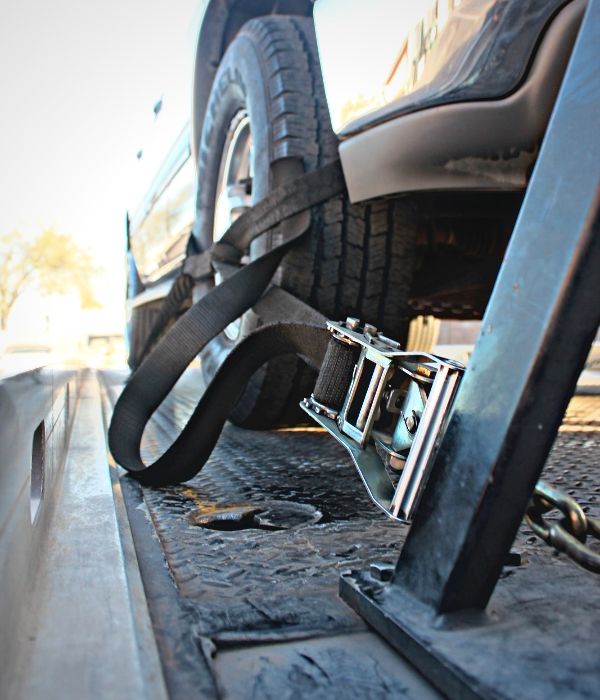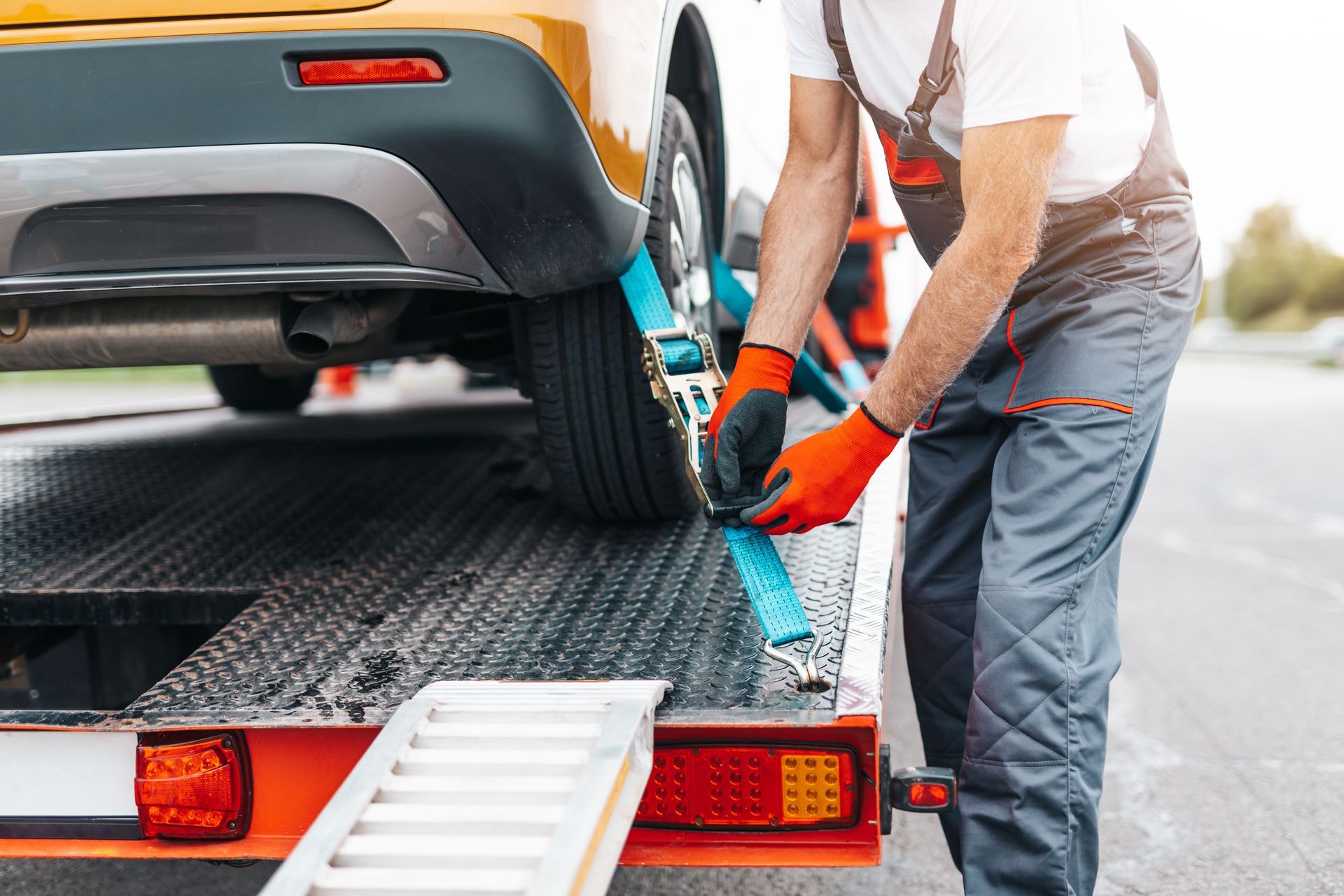Preparing Your Vehicle For Winter: A Comprehensive Guide From Your Trusted Towing Service

As winter approaches, you don't just need to stock up on cozy sweaters and hot cocoa - your vehicle also needs some extra care. Yes, you heard it right! Your cherished ride that has been a reliable companion throughout the year needs your attention now more than ever. As temperatures plummet and roads become icy, ensuring your vehicle is in top shape becomes not only important but essential for safe driving. We're here as your trusted towing service to guide you through the process of preparing your vehicle for those frosty months ahead.
Let's face it, nobody wants to be stranded in the middle of nowhere with a broken car when it's freezing cold outside. And trust us; we've seen enough unfortunate incidents like these in our years of service. That's why we've put together this comprehensive guide packed with tips and advice about everything from checking essential fluids and assessing brake conditions to testing batteries and inspecting heating systems. So buckle up because we're about to embark on a journey towards making sure your ride remains smooth, even amid snowflakes and chilly winds!
Checking and Replacing Essential Fluids
Don't overlook the importance of checking and replacing essential fluids in your vehicle; it's not just about keeping things running smoothly, but also about ensuring your safety during harsh winter conditions. One crucial factor to keep an eye on is fluid viscosity. You might be wondering what that even means - well, let me break it down for you: viscosity refers to a fluid's resistance to flow. In layman's terms, how thick or thin it is. As temperatures drop, fluids can thicken, making them less effective at doing their job. So, before winter hits full swing, make sure you've got that covered.
Now let's talk oil changes - yes, they're as important as ever when prepping for winter! Your engine oil plays a massive role in keeping your vehicle running smoothly and efficiently by reducing friction between moving parts. But did you know that colder temperatures can affect its efficiency? Using the right type of oil designed for lower temperatures helps ensure optimal performance under those icy conditions. Remember this little tip: thicker isn't always better when it comes to oil in the cold months! So don't shy away from asking your trusted mechanic or towing service for advice on which oil suits best for your ride during winter months.
## Ensuring Tire Safety
As the first frost dusts the ground, it's crucial to ensure your tires are up to the winter challenge, ready to grip icy roads and plow through snowdrifts. Your car is your trusted steed in this cold journey, and its shoes - yes, those round rubber feet we call tires - need as much love as you'd give your cozy woolen socks. Checking tire pressure becomes a ritual more important than ever during these severe months. Just like you wouldn't want flat or overinflated balloons at your party, neither does your car on a slippery road. Maintaining proper tire pressure not only provides optimal traction but also extends the life of your tires.
Now let's talk about snow chains - they're like that heavy scarf wrapped snug around your neck when it's freezing out there; an additional layer of safety for extreme conditions. If you live in an area with heavy snowfall or plan on mountain trips during winter, consider getting these lifesavers installed. They might seem intimidating initially, but remember how awkward it felt when you first tried tying a tie? With practice and patience, you'll master fitting them correctly onto your tires in no time. So go ahead and embrace winter driving with confidence knowing that a well-prepared vehicle has got your back!
## Assessing Brake Condition
Now, let's shift gears and focus on the importance of assessing your brake condition, because when it's icy out there, you'll want them to work like a charm. This is no time to cut corners or ignore those little signs that something might be off with your brakes. Listen for any squeaking or grinding noises when you apply pressure - these are telltale signs that your brakes may need some attention. Look into brake upgrades if you find yourself frequently driving in harsh winter conditions. Upgraded brakes offer enhanced stopping power which can ease your mind when tackling slippery roads.
Don't forget about pad thickness too; it plays a pivotal role in ensuring proper braking function. Thin pads can spell disaster when trying to stop on an icy surface, so make sure yours have plenty of life left in them before winter sets in. If needed, take your vehicle to a trusted mechanic who can measure the pad thickness accurately and suggest replacements if necessary. Remember love, preparing for winter isn't just about keeping warm and cozy inside—it's also about making sure every part of your car is up-to-snuff so you can navigate those frosty roads safely and confidently!
## Testing the Battery
Switching gears, let's not forget about testing your battery. It's essential to ensure it won't leave you stranded in the bone-chilling cold. Winter can be a real beast on car batteries, so before the temperature plummets, make sure yours is up to snuff. Now I'm sure you're wondering how to do this? Well, buddy, there are plenty of ways to test your battery at home without needing any fancy equipment or mechanics. And guess what? Being prepared with jump start techniques could be a lifesaver when you least expect it.
You see, the average battery lifespan is somewhere around three to five years. But that doesn't mean they always give warning signs before they decide it's time for retirement! Check the age of your battery—if it's getting close to that 3-year mark or beyond, consider getting a new one as part of your winter prep routine. And remember those jump start techniques we talked about earlier? They're not just handy for emergencies; practicing them could help keep your battery in tiptop shape all through winter and beyond! So go ahead and show that old battery who's boss—after all, nothing says love like some good old-fashioned vehicle maintenance!
## Inspecting the Heating System
Don't let the biting cold catch you off guard—make sure to give your car's heating system a thorough check before those frosty mornings arrive. Your comfort, visibility, and safety depend on it! Start by assessing your thermostat functionality. This little device is the gatekeeper of warmth in your vehicle—it controls the amount of coolant flowing through your engine. When it works properly, you'll feel that cozy blast against your face as soon as you turn on the heater. But if it's faulty or stuck? You're left shivering while driving, which is no fun at all.
Next up: defrost efficiency. Imagine this—you wake up to a beautiful winter morning, only to find your windshield frosted over. That's when your defrost feature becomes a godsend! It works by blowing warm air onto the windshield glass to clear any ice and fog buildup quickly. However, if something goes wrong with this function, you could be left squinting through an icy window—a downright dangerous situation in snowy weather conditions! So take a moment now to test out these features; ensure they work efficiently so that come winter time, you can drive safely and comfortably without any heating system hiccups.
## Equipping with Emergency Supplies
Imagine being stranded in a snowstorm with no supplies—it's a scenario you should avoid at all costs by equipping your car with emergency items. You're not just preparing for winter, but for any unpredicted situation that could leave you stuck in the cold. One of the most crucial survival kit essentials is a good blanket. Now, don't think your old college dorm room throw will do—you need something designed to retain heat effectively. Different blanket types serve different purposes; a woolen blanket will offer warmth while an emergency thermal blanket—also known as space blankets—are lightweight and designed to reflect body heat back towards you.
Another indispensable item among survival kit essentials is food and water because who knows how long it might take before help reaches you? Keep high-energy bars or non-perishable foods stashed away in your car along with bottled water. Remember also to have tools like shovels, ice scrapers, and perhaps even sand or cat litter for traction if your vehicle gets stuck in the snow. Imagine yourself tucked into your warm thermal blanket after having cleared your car from thick snow using these tools—it's more than worth it! It's about keeping safe and maintaining comfort during those unexpected hitches on winter roads.
## Regular Maintenance and Servicing
It's essential to keep up with regular car maintenance and servicing, particularly when icy roads and freezing temperatures could amplify any existing issues under the hood. Don't skimp on your engine health; it's the heart of your vehicle, after all. If you neglect it, it won't be long before you find yourself stranded in a snow bank, wishing you'd taken better care of your trusty steed. Regular oil changes are crucial as cold weather can thicken your oil and strain the engine. And don't forget about those spark plugs; they need to be in top shape to ensure easy starts on chilly mornings.
Windshield care is another aspect that often gets overlooked but plays a vital role during winter months. Imagine trying to navigate through a blizzard without a clear view? Not fun or safe! Ensure your windshield wipers are working efficiently and replace them if needed. Keep an eye on your windshield washer fluid too—it should be topped off with a solution suitable for freezing conditions so that you're not left squinting through a grimy windshield at an incoming snowstorm. Remember, taking these steps now will save you from potential headaches (or heartaches) down the road this winter season!





